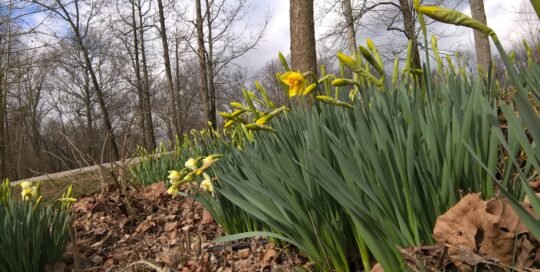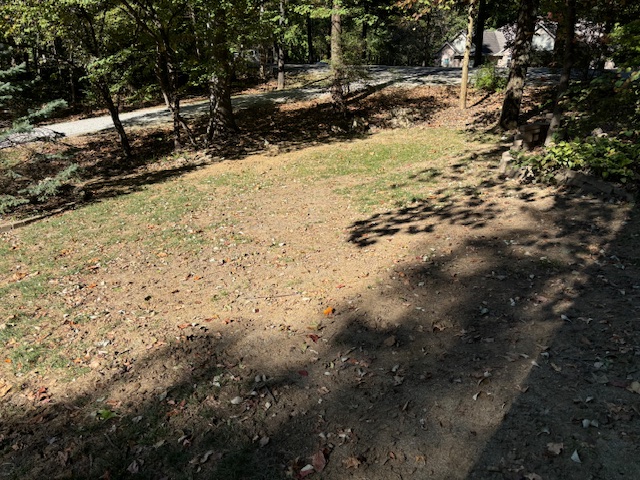New England Aster – Star of the Garden
Views: 1814

October 2, 2017: I can count on my New England aster to stand strong through the early fall days as the seasons change. Yesterday, the heat broke and with it, the humidity. My mom used to say that Spring and Fall were the only reasons to live in Southern Indiana, but they only lasted two days each! She was nearly right. For a few, short and glorious weeks, the weather in Southern Indiana will be indescribably wonderful. Get out and enjoy it, because we know what’s coming next.
I don’t believe we’ve gotten any rain since Irma dropped ½ “. I’ve been watering the newly planted plants and my fern and hosta bed to keep them alive, but that’s all its doing. Watering just isn’t as effective as a good, long, soaking rain.
New England Aster
Almost all my perennials are looking tired, dusty and droopy – ready to go dormant until next spring. The one bright “star” in my garden is the New England Aster (Symphyotrichum novae-angliae). “Star” was an intentional choice…just a little pun. The Greek word for “star” is “aster”. (Forgive me, I got distracted when I was looking up information on the internet.)
As with most my plants, the New England aster has to grow in less-than-ideal conditions – it’s probably getting too little sun and too much shade. But it’s a forgiving and hardy native, growing in most of eastern North America (Zones 4 to 8). Blooming in late summer to early fall, it’s a great season extender for pollinators and is visited by lots of bees and butterflies. It’s the host plant for Pearly Crescent caterpillars.
It can get a little floppy, but you can reduce that tendency by cutting in back about a half to a third in late spring. The blooms can vary in color from deep purple to lilac to (rarely) white. It’s a great plant to place behind shorter plants – the stems tend to get brown and look unattractive about the time it’s blooming.
Future
I’ve read that it will re-seed and I’ve read that it won’t re-seed readily. Personally, I’d like more of these plants, so I hope it does. It can also spread slowly by its roots. Since it needs to be divided every three years or so (in late fall), you’ll eventually get more asters, unless you give them away.
I’m thinking that next spring, I’m going to move it to a sunnier spot. Then I want to try to find some goldenrod (Solidago) to plant with it. Although it likes a good bit of moisture, it can make do with less. It is a pretty (I mean really pretty) and low maintenance addition to your garden.
Another thing I learned by internet distraction: the New England aster is also known as the Michaelmas daisy, because it blooms around Michaelmas (September 29), which is also known as the Feast of Saints Michael, Gabriel and Raphael, which is also known as the Feast of the Archangels or the Feast of Saint Michael and All Angels.
Stay Green, good friends!
Meet Dona Bergman
Dona Bergman is a founding member, Southwest Indiana Chapter of the Indiana Native Plant & Wildlife Society, and an Advanced Master Gardener.







